Intel Arc B580 GPU with two M.2 slots smiles for the camera — Maxsun GPU offers storage expansion for two PCIe 4.0 SSDs
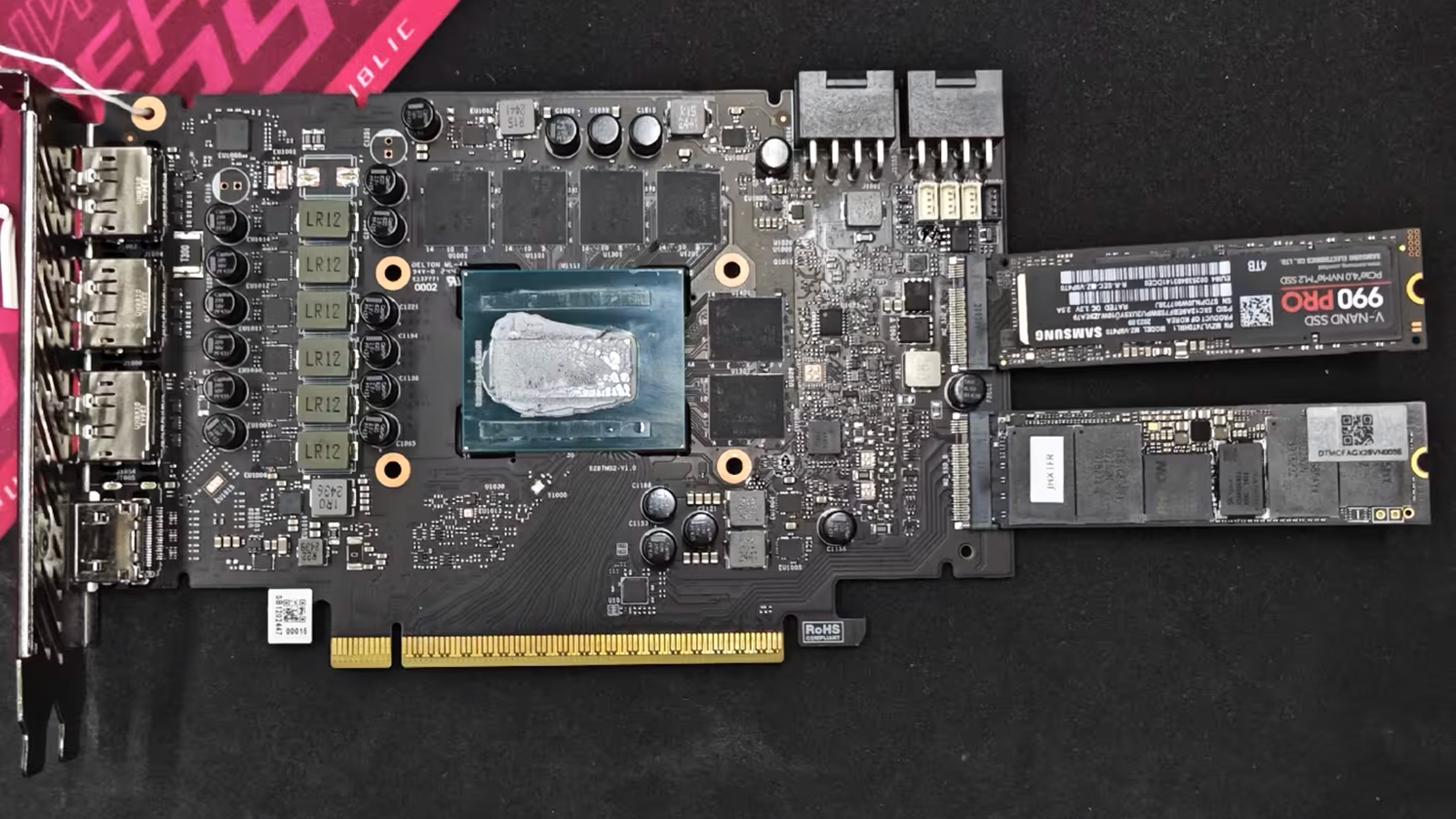
Maxsun teased a special variant of the iCraft Arc B580 12G graphics card with two M.2 slots earlier this month. However, the company didn't describe the card in detail or show its internals. A member of the Bilibili community filled this gap by posting images of the board without its cooling system. The card has two M.2 slots for installing a couple of PCIe 4.0 x4 drives and a capable power supply.
Although the exact model of the Maxsun graphics card is unknown, its design is based on the recently announced iCraft Arc B580 12G. Both utilize the identical PCB. The current model already has empty traces for the two M.2 slots at the end of the PCB, so Maxsun just soldered on the M.2 slots in the special variant.
Although the idea of adding an M.2 slot to a graphics card is not new, without any doubt, the M.2 slots are the main selling point of Maxsun's iCraft Arc B580 12G graphics card. The slots are located on the backside of the card, so the drives will have to be inserted into the slot and then attached to the backplate of the cooling system with a screw. It seems that you don't need to take off the cooler to install the M.2 SSDs.
The arrangement is functional and results in a relatively rigid structure, but it is certainly an unorthodox way to secure SSDs in their slots. Typically, SSDs are attached to the board they’re installed into. Without its cooling system, the card resembles a fish with a long tail.
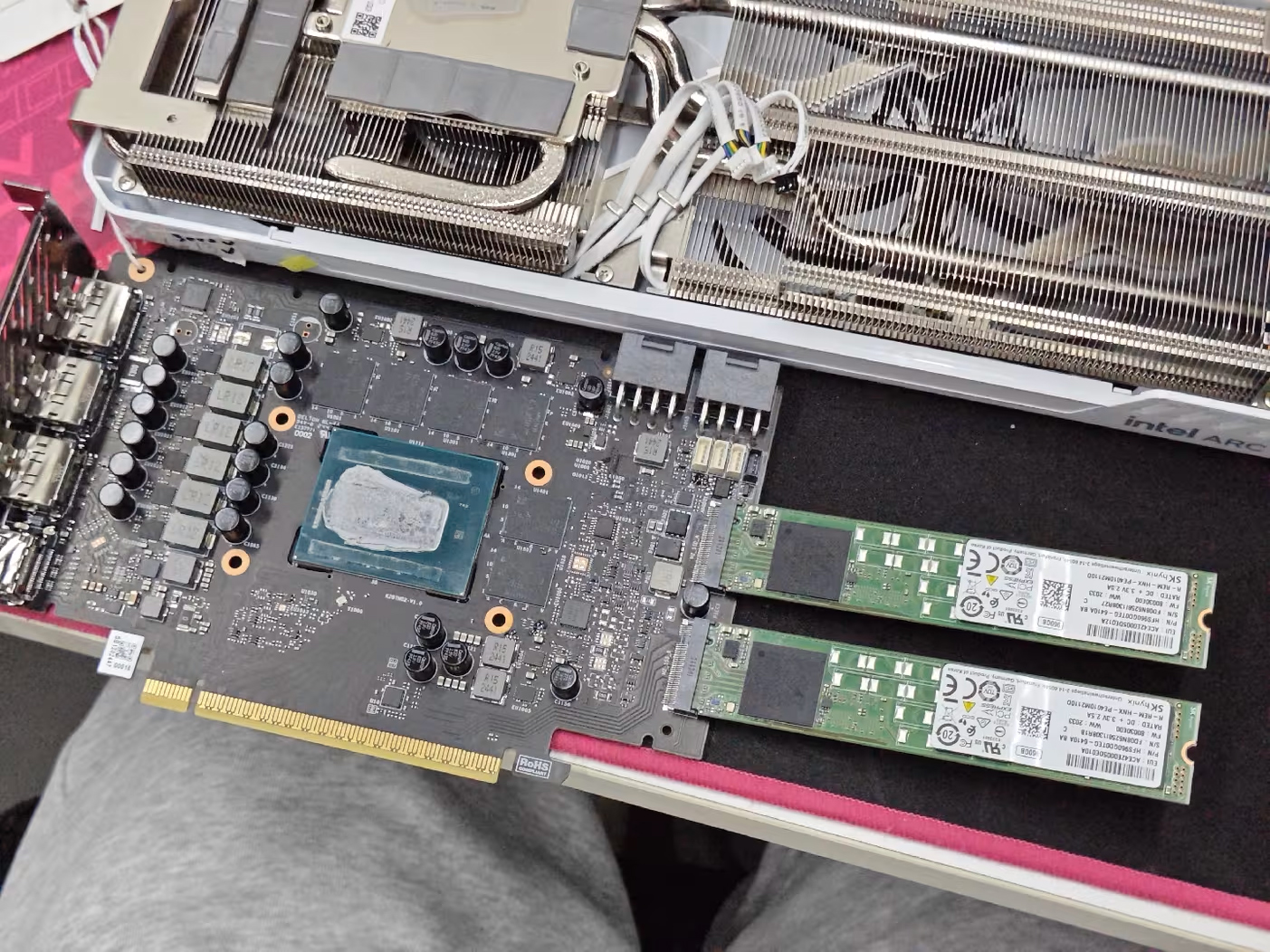
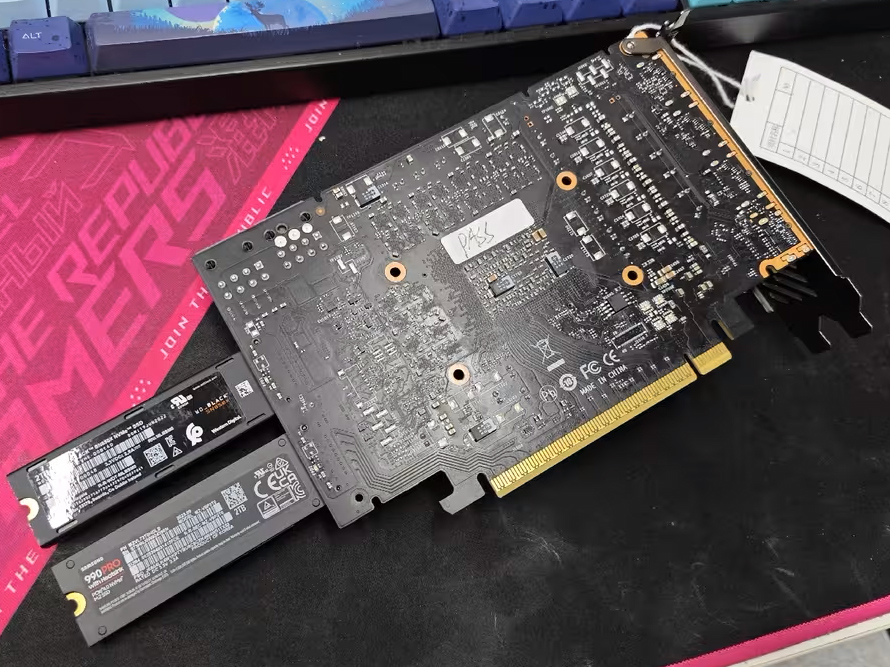
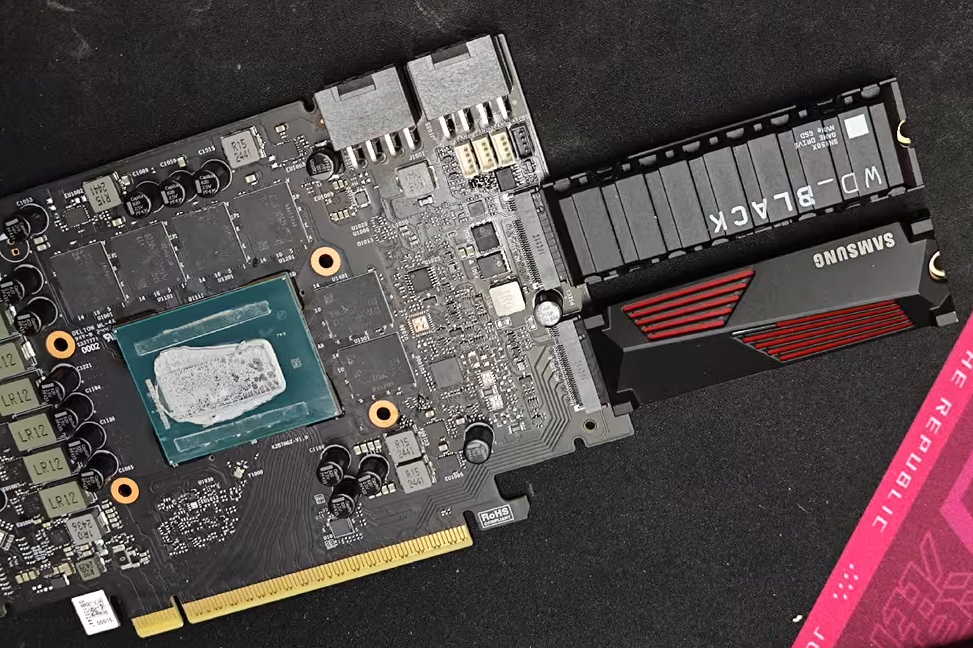
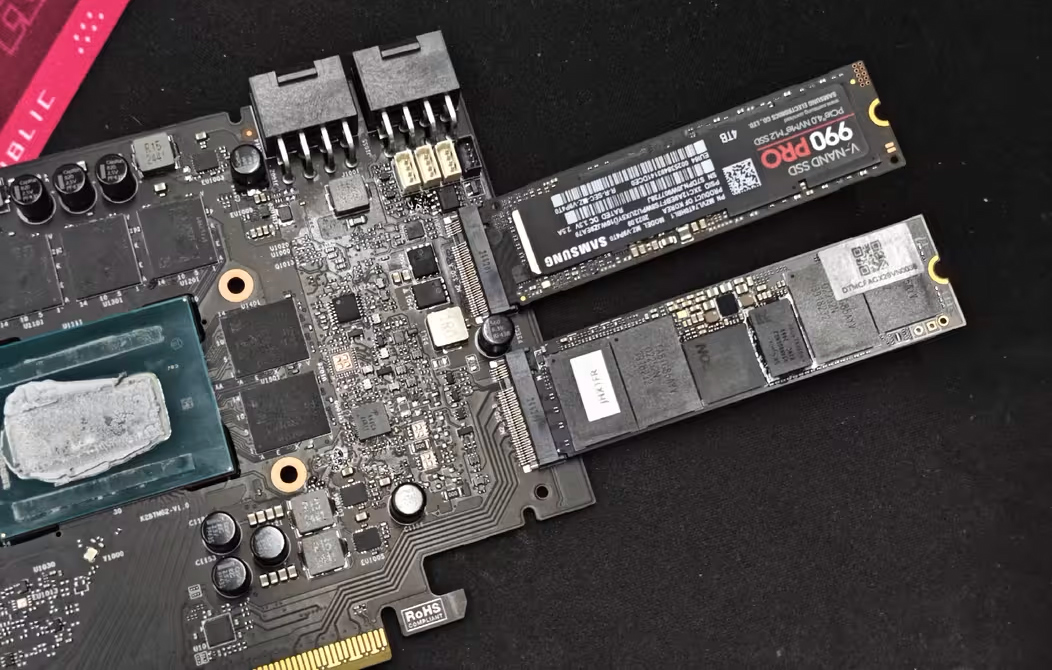
As the name suggests, Maxsun's upcoming iCraft Arc B580 graphics card carries the Intel Arc B580 graphics processor (with 2,560 stream processors) and 12GB of GDDR6 memory. As Intel's recommended total board power for its Arc B580 product is 190W, the card has two eight-pin auxiliary PCIe power connectors, which can theoretically deliver up to 300W of power to the board.
The 300W capacity might be overkill for the GPU itself (which has a moderate six-phase voltage regulating module), but considering that two high-end M.2-2280/22110 SSDs can consume significant power, providing an excess power margin ensures both the GPU and the drives receive sufficient power.
As the Maxsun iCraft Arc B580 12G is an inexpensive graphics card, it is unsurprising that it does not carry a PCIe switch, which helps reduce cost. However, this means that the motherboard/CPU must perform PCIe bifurcation, so potential buyers must ensure that their platform fully supports PCIe x8/x4/x4 bifurcation.
Get Tom's Hardware's best news and in-depth reviews, straight to your inbox.

Anton Shilov is a contributing writer at Tom’s Hardware. Over the past couple of decades, he has covered everything from CPUs and GPUs to supercomputers and from modern process technologies and latest fab tools to high-tech industry trends.
-
Math Geek i like the idea of this but i'll have to see what some reviews say about it before taking it seriously.Reply
i do look forward to seeing this go through a test bench or 2 . -
abufrejoval Putting those M.2 connectors there, doesn't necessarily mean that you should mount NVMe storage drives in that very spot.Reply
There are plenty of M.2. to M.2 or M.2 to PCIe slot cable connector variants, allowing you to put peripherals and extensions somewhere more convenient.
Providing those connectors should be default on any card that won't use all the lane allocations of the slot if physically occupies: they are simply too precious a resource to waste!
I've just put a Minisforum BD790i into service, a €500 Mini-ITX board including a Ryzen 9 7945HX APU that offers a x16 PCIe v5.0 slot and two M.2 connectors.
To my knowledge you can't buy anything to take advantage of a PCIe v5 x16 slot, perhaps some prototype CXL adapters do exist. Yet it's very easy to run out of room and ports to add things to that form factor, which is a shame, because it's a monster of compute and I/O power by virtue of its silicon resources.
To alleviate things a little I bought a cheap bifurcation adapter from Amazon which splits the x16 slot into two M.2 mouts underneath a raised slot that's physically x16 but x8 electrically and capable of fitting any normal low-profile card for normal slot total height.
I used the outward facing M.2 mount to add an ASM based 6 port SATA adapter (no space for SATA ports on that board otherwise, even if 2 come with the APU) while the inward facing one holds a third M.2 NVMe drive.
The x8 PCIe v5.0 slot currently holds an Aquantia ACQ107 based Nbase-T card (including 10Base-T) that runs with either 2 lanes of PCIe v3 or 4 lanes of PCIe v4.
With the SATA ports feeding a couple of 18GB Seagate Helium hard drives and the NVMe slots providing cache, this is a monster µ-server in terms of capabilities which currently suckes a maximum of 130 Watts at the wall with all out power viruses, yet easily idles at 30 Watts, again at the wall plug with HDDs spinning and 10Gbit networking up and alive.
If only they supported ECC RAM on Dragon Range... or installing their drivers on Windows server editions! (a penny pinching aspect of AMD I've hated since the first ever APUs they sold! Teams green and blue don't do that!)
It's still a giant waste in terms of what bandwidth is available in total, but a much better use of otherwise inaccessible resources.
Adding this type of bifurcation support via M.2 connectors should really be default, it's extra cost is pennies.
But unfortunately customer support issues could be giant, because everyone would blame the GPUs for any stupidity behind them... even if it's essentially entirely a mainboard+M.2 peripheral issue and the GPU would only provide circuit board traces. -
newtechldtech IMO GPU makers should move from 16 lanes to 8 lanes as a standard .Reply
with Gen5 PCIe bandwidth and soon GEN6 to come , it is a good idea to spare 8 lanes for other cards .. and not waste the lanes.